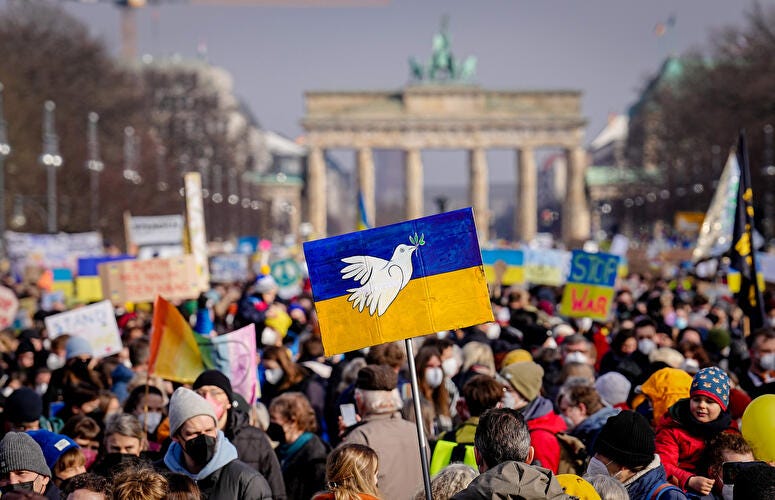12 Guidelines for a Non-Violent Street Demonstration
Non-violent street demonstrations require respect for all citizens through our speech, written word and action. Street protests have power and influence when conducted with dignity and integrity. Violence in demonstrations turns the public off. Media will often focus on any pockets of violence in a demonstration.
Demonstration in Berlin against the war in Ukraine
Prior training in Non-Violent Direct Action (NVDA) contributes to a peaceful demonstration.
If a section of violence erupts, then prompt action is necessary with calm speech and clear guidance to diffuse the situation.
Non-violent demonstrators can adopt the sitting posture in area of violence to show non-violence or form a circle around charged area.
Music, chanting and singing contribute to a sense of safety and is also welcoming for parents with their children to jon a demonstration.
Speak slowly, short sentences to agitated people.
Distribute leaflets to communicate purpose of protest without confrontational language in the text.
Non-violent protest includes the written word, such as public talks, posters, flyers, articles, essays, poems, songs, dance and the arts. Non-violent communication contributes to radical action with caring and thoughtful language.
Role play in a training gives preparation for challenges in a demonstration. This includes addressing those with violent views and any questionable behaviour of the police in making arrests.
Practice to stay clear and calm in the face of abusive language, threats and potentials for violence.
Sharing of common values can reach out to the undecided witnessing radical action.
Make connections with the police before, during and after a demonstration. This builds empathy rather than hostility.
Radical non-violent action requires creativity in methodology rather than repeating the same format.
Be bold.


